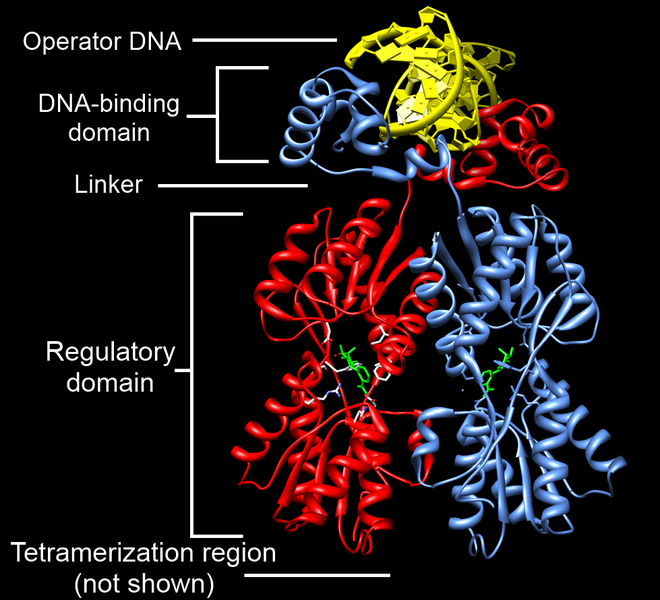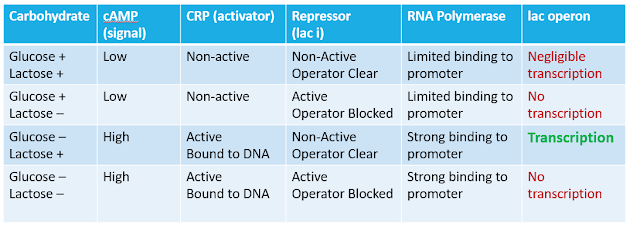The core difference between prokaryotes and eukaryotes is the nucleus. Since bacteria lack a nucleus, transcription takes place in the cytosol. There is no need for a tag to get out of the nucleus, so there is no need for capping. Also, there are no introns, so no need for splicing. Basically, there is no processing of RNA to make mRNA. There is no pre-mRNA. When a gene is transcribed, the transcript is mRNA.
 |
| https://cnx.org/resources/0d9811947495ba69dfd93f4c655e0384deb5b73e/Figure_16_01_01.jpg |
Since there is no membrane separating transcription from translation, you can couple these to processes. As mRNA is made, it can be translated (polyribosome).
Bacteria have a single circular molecule of DNA (a genophore, not a true chromosome). They have to conserve their genetic space, so bacteria combine genes for a metabolic process in a single mRNA. IMPORTANT: bacteria can combine genes for a metabolic pathway into a sequential sequence with a single promoter. Thus, when you transcribe, you get all the genes for a given metabolic pathway.
The word OPERON describes this unique arrangement of prokaryotic genes: One promoter and one operator for a given series of metabolically linked genes.

The lac Operon holds three genes that give the cell the ability to take in and use the sugar LACTOSE. [Image Note: Bacteria have two promoter regions, -10 & -35, for a given gene or operon]
For E. coli, glucose is the preferred sugar. When glucose is present, there is no need to use lactose: these genes are not transcribed. When there is no glucose, E. coli has to use other sugars. IF lactose is present, the genes for lactose utilization will be made. Conversely, if there is no lactose, they genes remain locked down.
- Glucose Present: No transcription
- Glucose Absent: Minimal transcription
- Glucose Absent, Lactose Present: Transcription of the lac operon.
- You can block the operator of the gene. This prevents RNA polymerase from making RNA.
- You can alter the promoter (or the interaction between transcription factors and DNA) to prevent binding of the Transcription Complex (RNA polymerase).
 |
|
The lac operon repressor (LACI) is a protein that is constitutively (always) expressed. This indicates that the lac operon is normally turned OFF. Notice that the gene for the regulatory protein is upstream from the lac operon. The lac repressor (LacI) binds to the major groove of the DNA at the operator. As you can see in the annotated image of the repressor, you have a DNA-binding region (active site), and a regulatory domain. The regulatory domain has the ability to bind to Lactose (the inducer).
 You must have a way to unlock the operon, or to put it another way, to inactivate the repressor. An inducer is a ligand that can bind to a regulatory domain, changing the shape of the regulatory domain, and thus inactivating the DNA-binding domain. In the case of the the lac repressor, the ligand is allolactose (a derivative of lactose). When allolactose binds to the lac repressor, the repressor is inactivated, and the operon cleared. This is seen in the image below.
You must have a way to unlock the operon, or to put it another way, to inactivate the repressor. An inducer is a ligand that can bind to a regulatory domain, changing the shape of the regulatory domain, and thus inactivating the DNA-binding domain. In the case of the the lac repressor, the ligand is allolactose (a derivative of lactose). When allolactose binds to the lac repressor, the repressor is inactivated, and the operon cleared. This is seen in the image below.Therefore, the lac operon is partially regulated by the presence of lactose in the environment. If there is no lactose in the environment, then there is no need to transcribe the three genes needed to use lactose.
 |
| https://upload.wikimedia.org/wikipedia/commons/0/0c/Lac-operon.jpeg |
Remember, we don't want to expend energy for things we don't need. Below is the size of the three gene products:
- β-Galactosidase 1,024 Amino Acids
- β-Galactoside Permease 418 Amino Acids
- β-galactoside transacetylase 203 Amino Acids
Tomorrow we will look at the positive regulation of the lac operon. Remember, you still will not transcribe this operon if glucose is present. You only transcribe when glucose is absent. So how does the operon know when glucose is absent? That will be our discussion tomorrow.
Challenge
In your own words, describe how lactose (allolactose) is used to regulate the transcription of the lac operon. In your discussion, make sure that you explain the concept of an operon, and discuss the differences between eukaryote and prokaryote gene transcription.The Lac operon has two levels of regulation. The first is through a repressor protein that binds to the operator of the operon. The repressor is constitutively expressed and binds to the Lac Operon operator. When lactose is present, it binds to the repressor, thus changing the shape of the repressor protein; the repressor detaches from the operator, and transcription can occur.
There is a second regulation system for the Lac Operon, and it has to deal with the promoter and the CRP binding site. In the case of the Lac operon, the promoter is "weak". RNA polymerase does not readily bind to the promoter. To assist in binding RNA polymerase, there is an activator site (CRP binding site) that can be used to "enhance" the promoter (enhance the binding of RNA polymerase to the promoter).
CRP stands for cAMP Regulator Protein (it is also known as the Catabolite Activator Protein). CRP has a binding site for cAMP, and the protein is activated (turned on) when cAMP binds. The CRP-cAMP complex can bind to the CRP binding site, and alter the Lac Operon promoter, enhancing the binding of RNA Polymerase to the promoter. But why this second regulatory system?
Remember that for this cell, glucose is the preferred carbohydrate and energy source (Escherichia coli is a chemoheterotrophic organism). The first regulatory system for the operon dealt with the presence/absence of Lactose (you only transcribe the operon when lactose is present). This second deals with the presence/absence of glucose. Glucose is the primary carbohydrate source, so as long as glucose is present, there is no need to transcribe pathways for secondary sugars.
In bacteria, the movement of glucose across the membrane (remember hexokinase?) inhibits the production of cAMP. If glucose transport slows dramatically or stops, Adenylate Cyclase begins making cAMP. So, while glucose available, there is little to no cAMP in the cell. When glucose is scarce, we see an increase in cellular levels of cAMP. For bacteria like E. coli, we can see cAMP as a starvation signal. The CRP-cAMP complex will bind to the bacterial DNA molecule and activate numerous pathways for alternative carbohydrate utilization. As with the Lac Operon, these other pathways will only transcribe when the correct sugar is in the environment.
Below is an image that demonstrates the two components of regulation.
 |
| https://commons.wikimedia.org/wiki/File:Lac_operon-2010-21-01.png
Below is a table that breaks down the regulation.
|


This comment has been removed by the author.
ReplyDeleteVery informative sir , for the simple version visit this link https://bio-seeks.blogspot.com/2020/06/lac-operon-lac-lactose-operon.html?m=1
ReplyDeleteA GREAT SPELL CASTER (DR. EMU) THAT HELP ME BRING BACK MY EX GIRLFRIEND.
ReplyDeleteAm so happy to testify about a great spell caster that helped me when all hope was lost for me to unite with my ex-girlfriend that I love so much. I had a girlfriend that love me so much but something terrible happen to our relationship one afternoon when her friend that was always trying to get to me was trying to force me to make love to her just because she was been jealous of her friend that i was dating and on the scene my girlfriend just walk in and she thought we had something special doing together, i tried to explain things to her that her friend always do this whenever she is not with me and i always refuse her but i never told her because i did not want the both of them to be enemies to each other but she never believed me. She broke up with me and I tried times without numbers to make her believe me but she never believed me until one day i heard about the DR. EMU and I emailed him and he replied to me so kindly and helped me get back my lovely relationship that was already gone for two months.
Email him at: Emutemple@gmail.com
Call or Whats-app him: +2347012841542